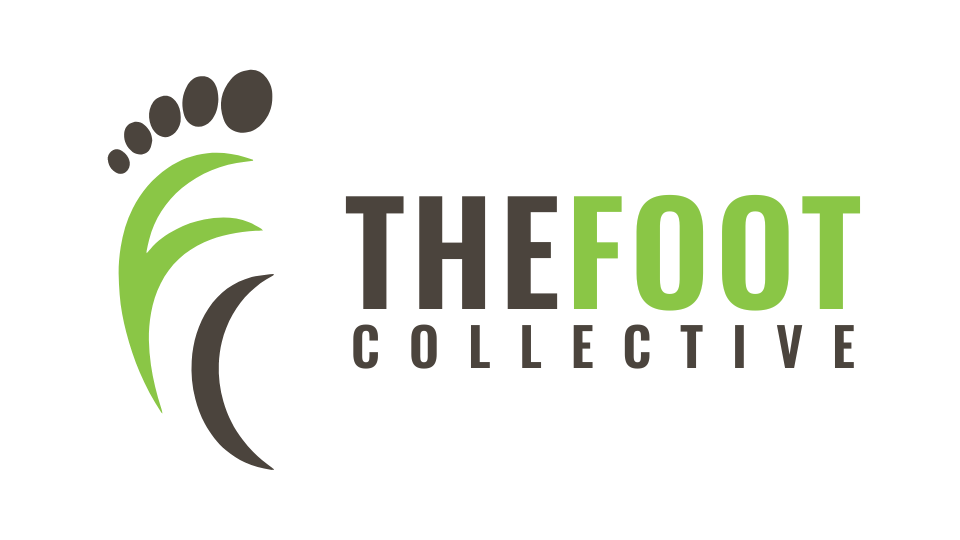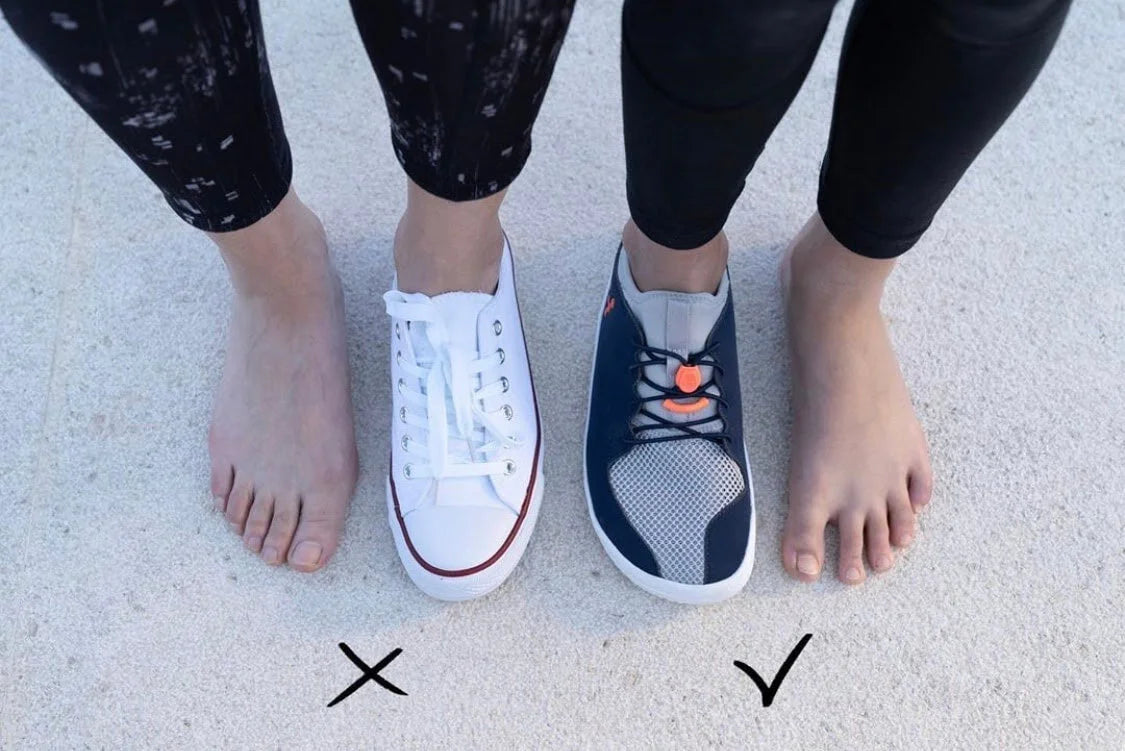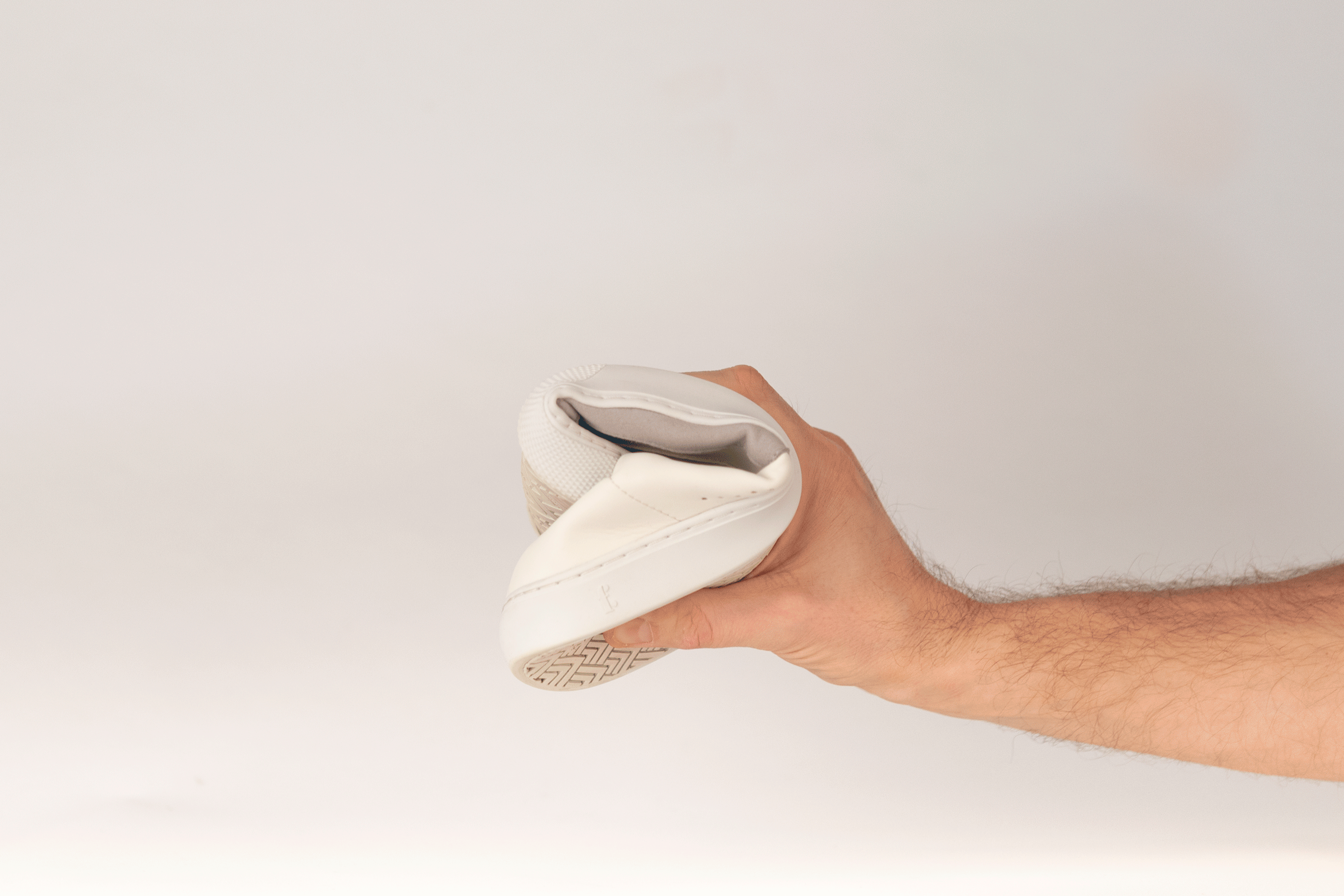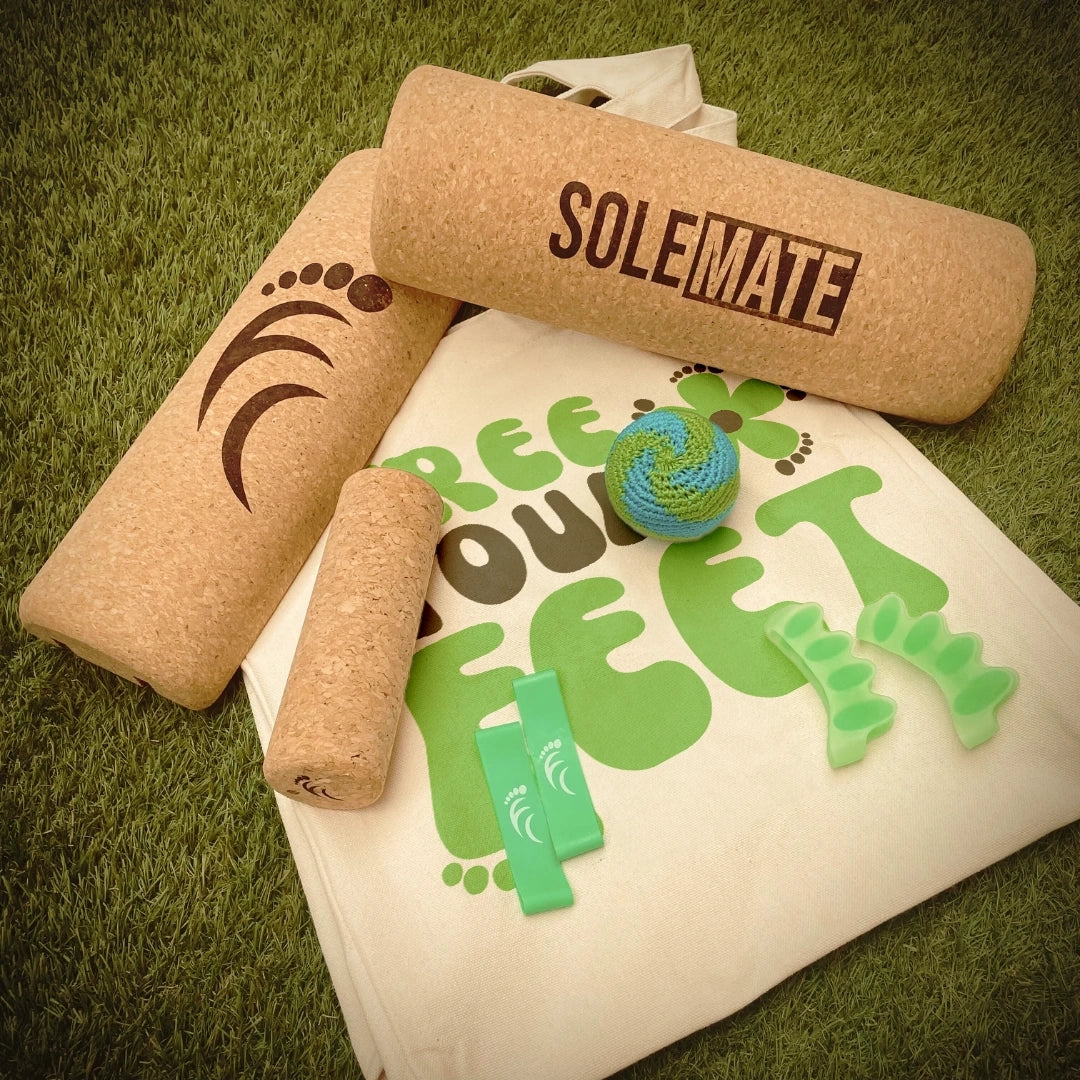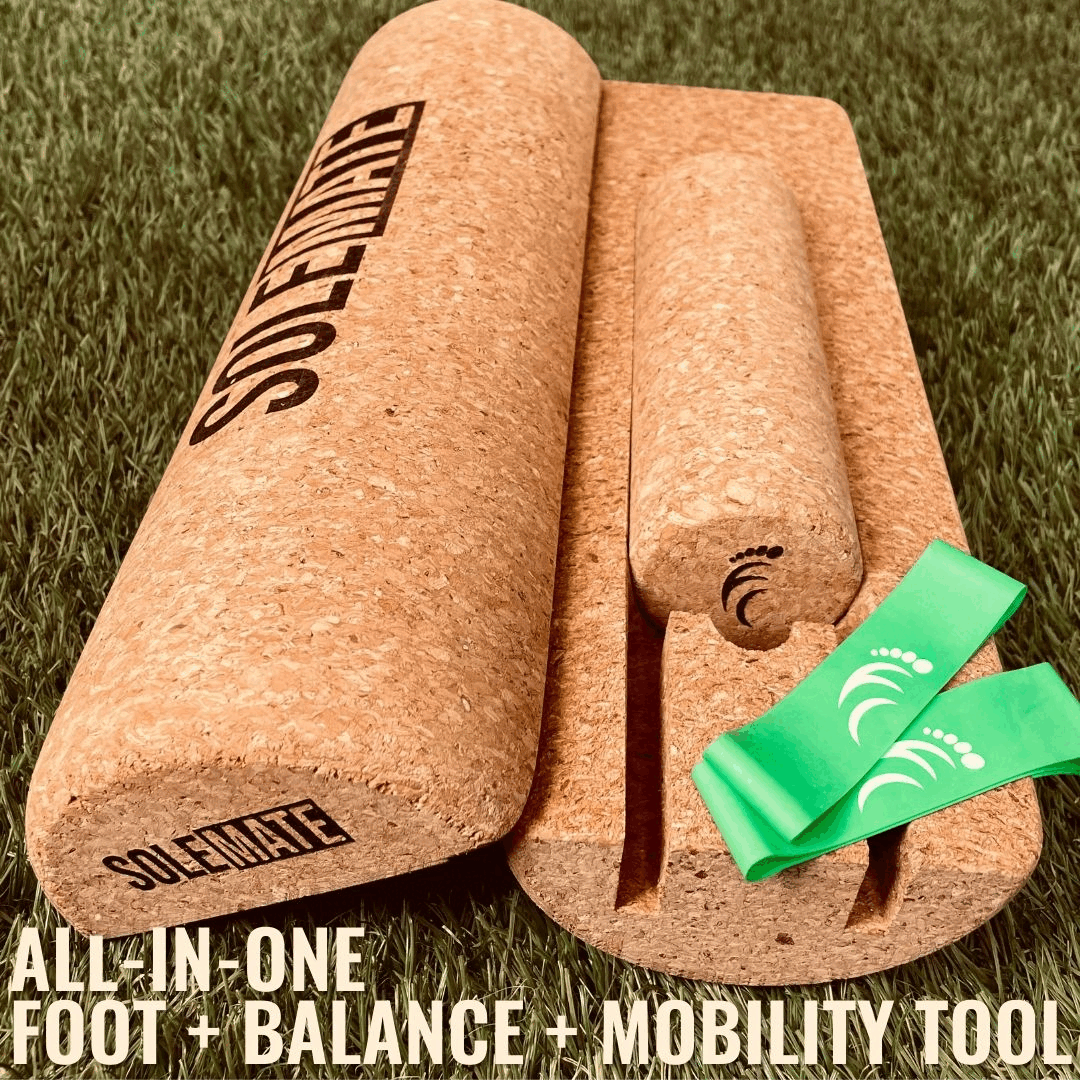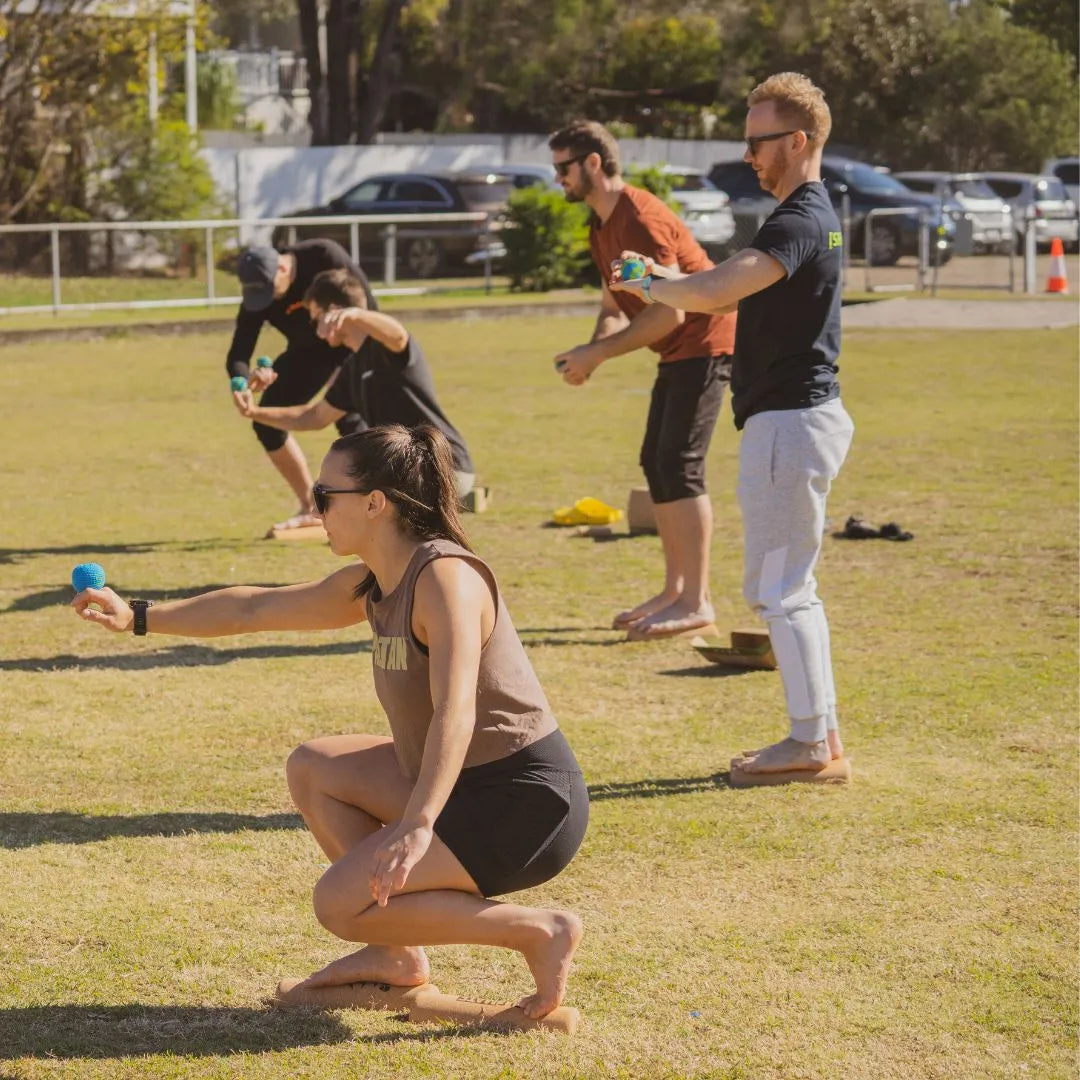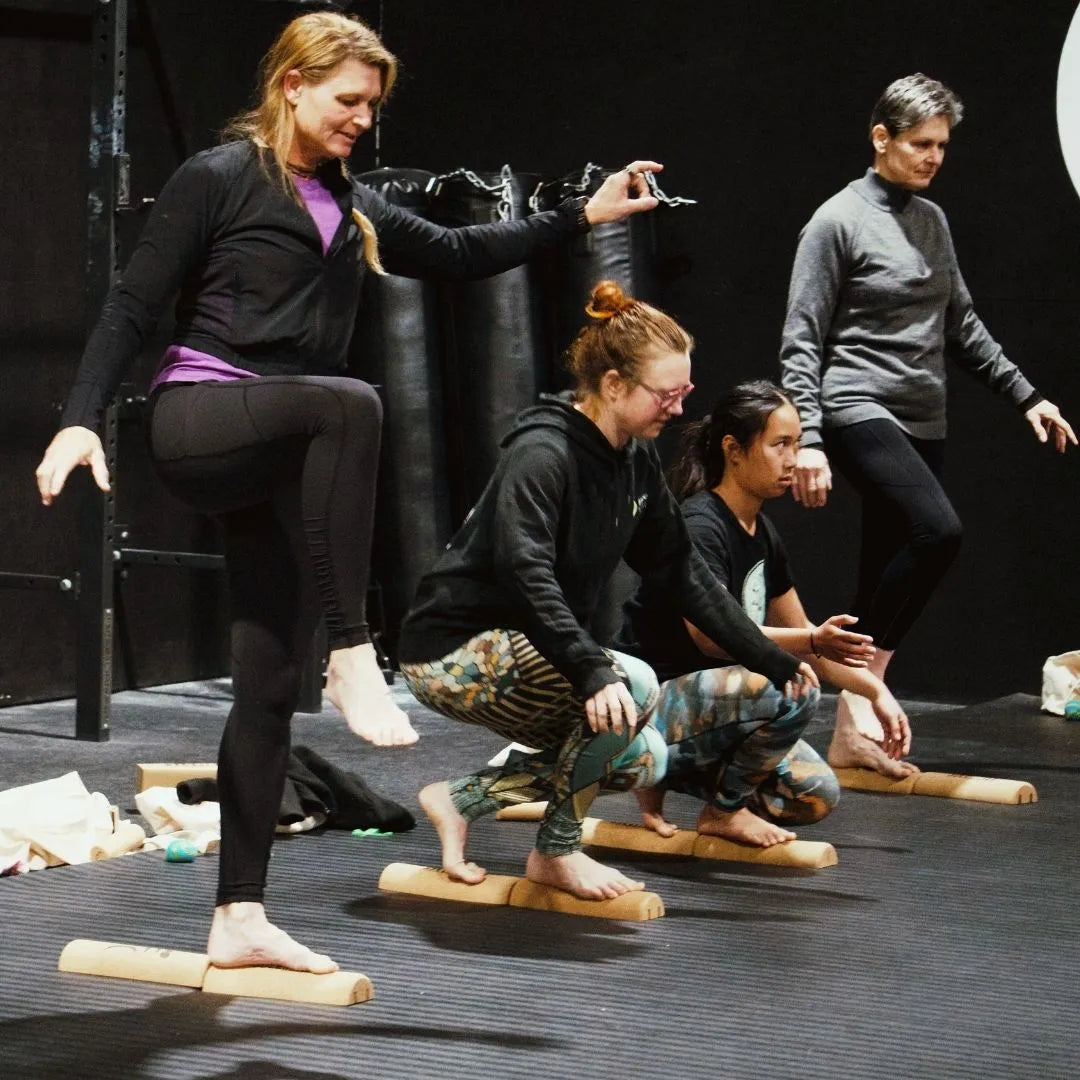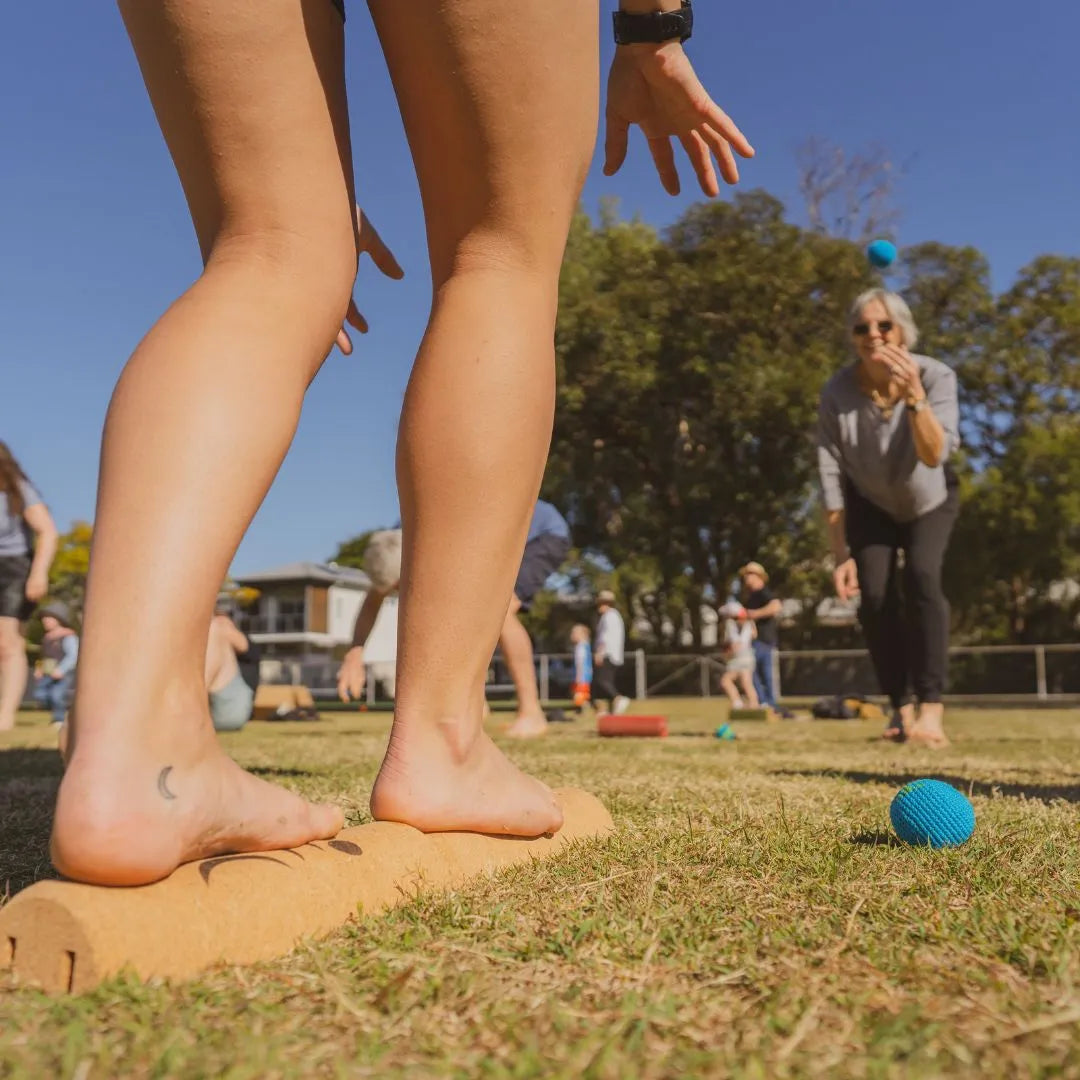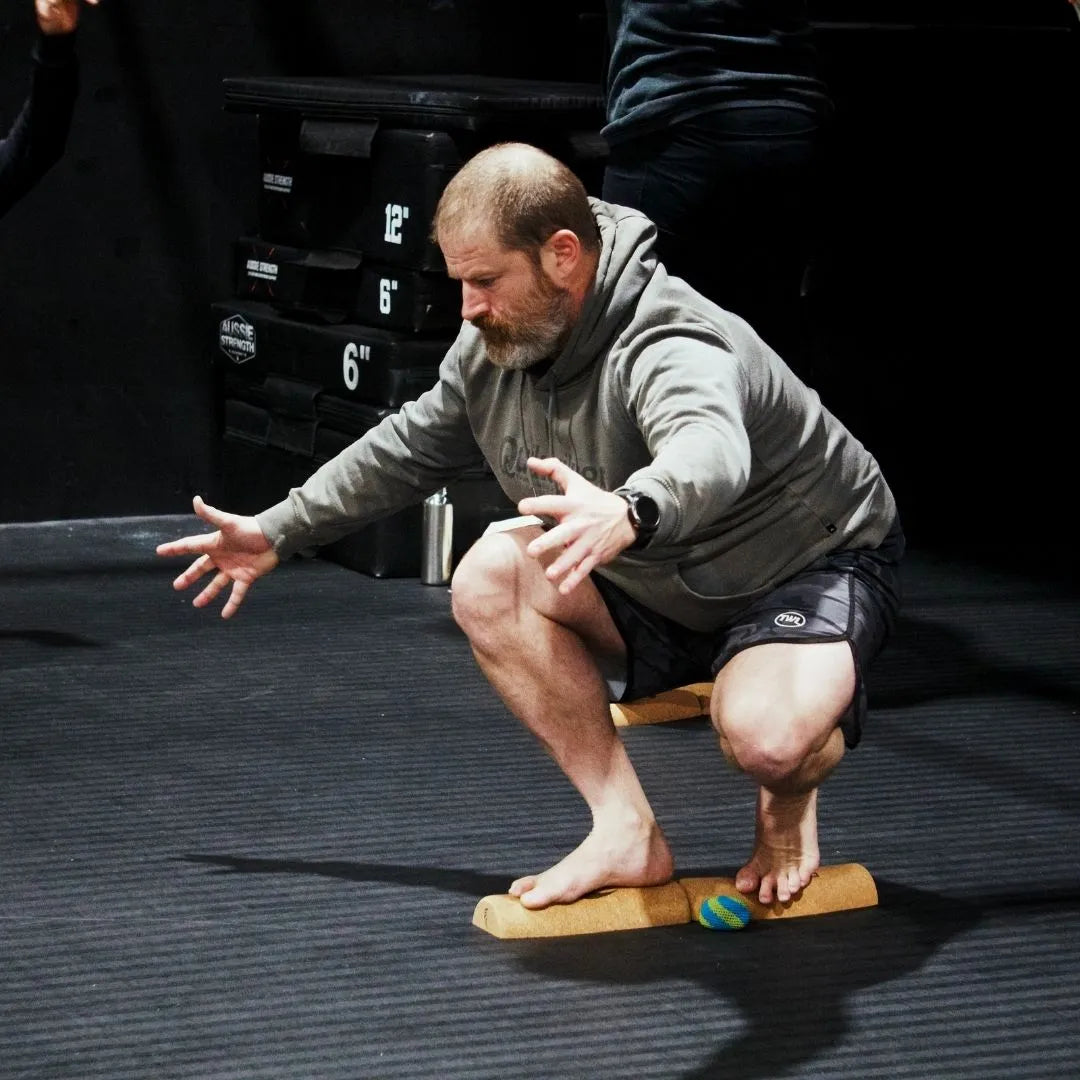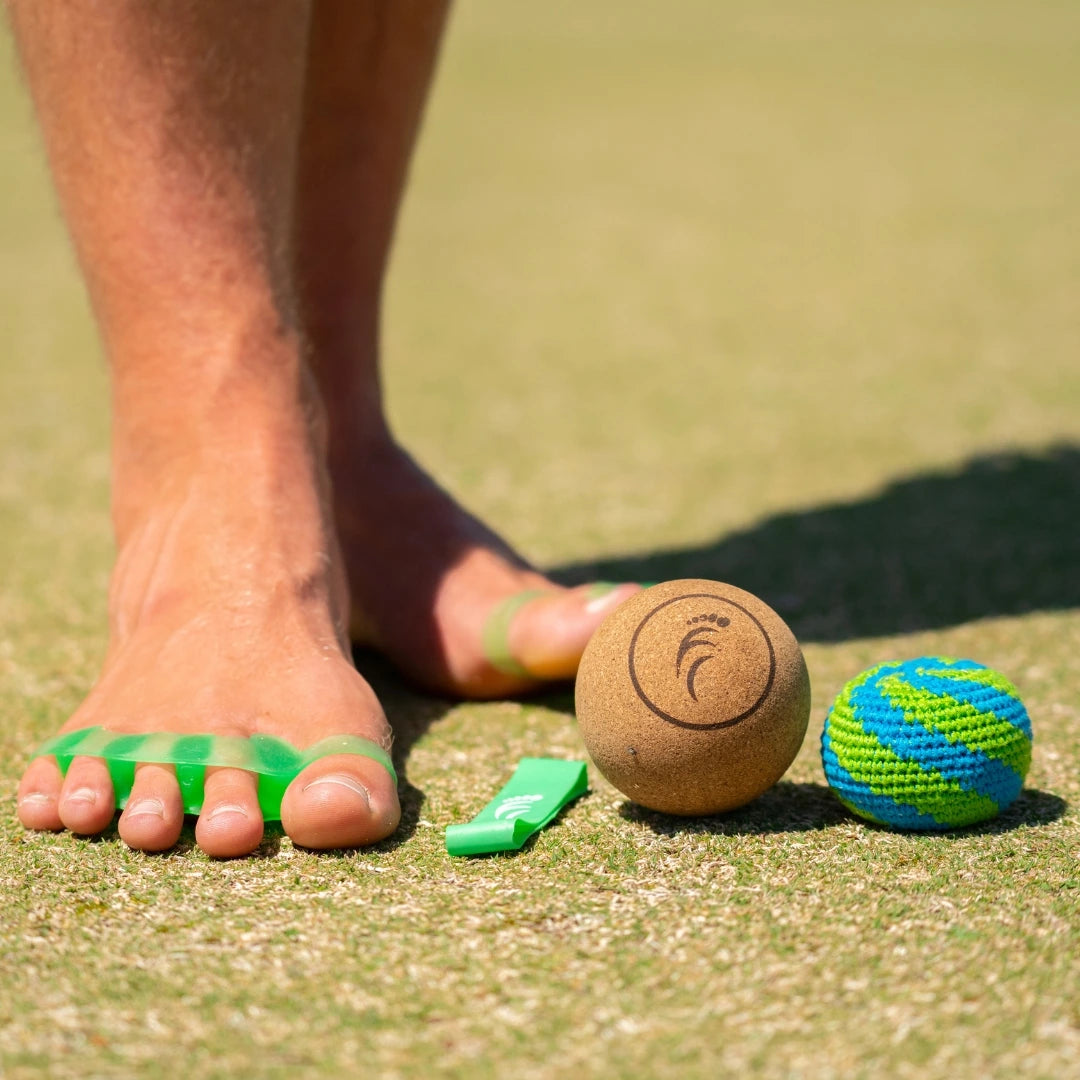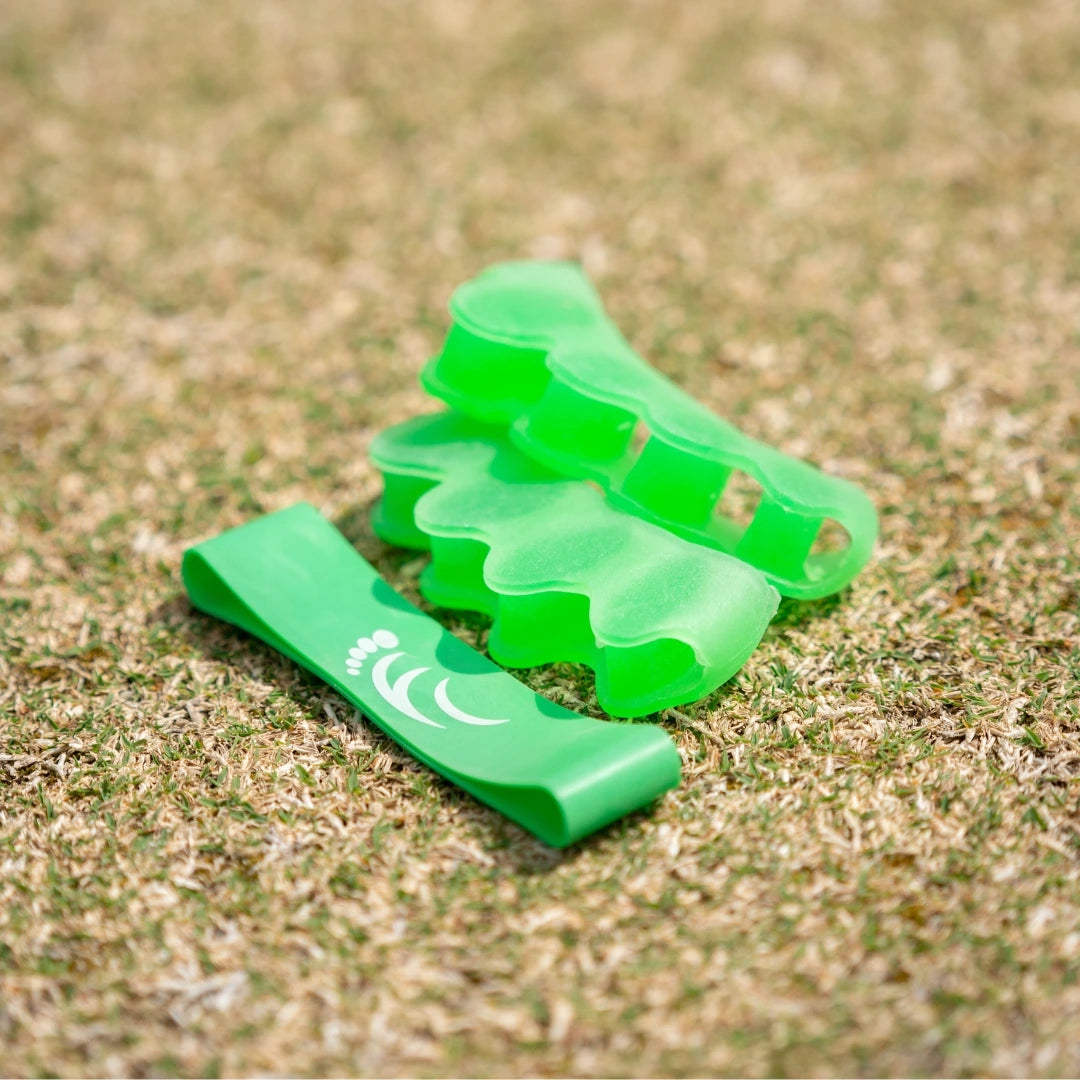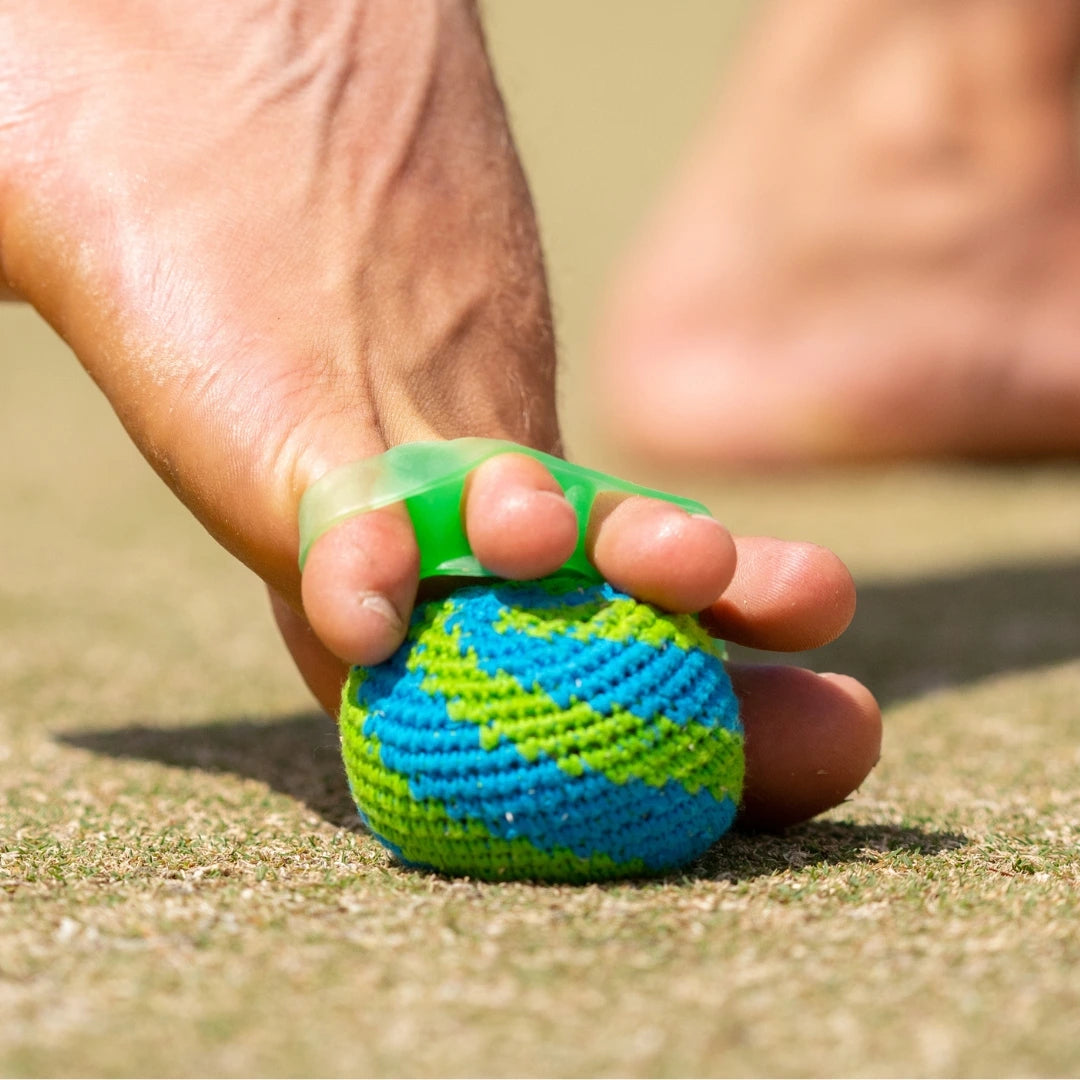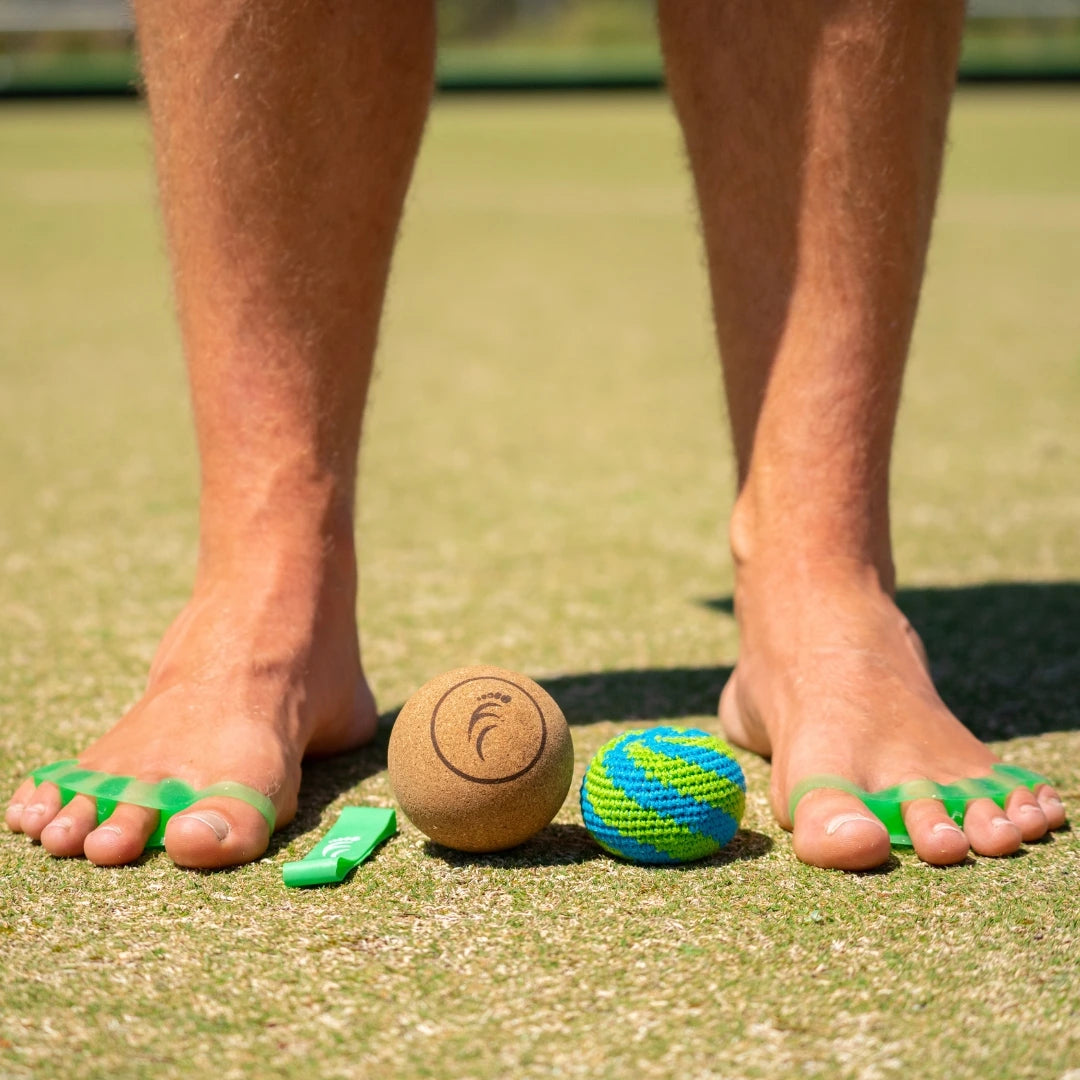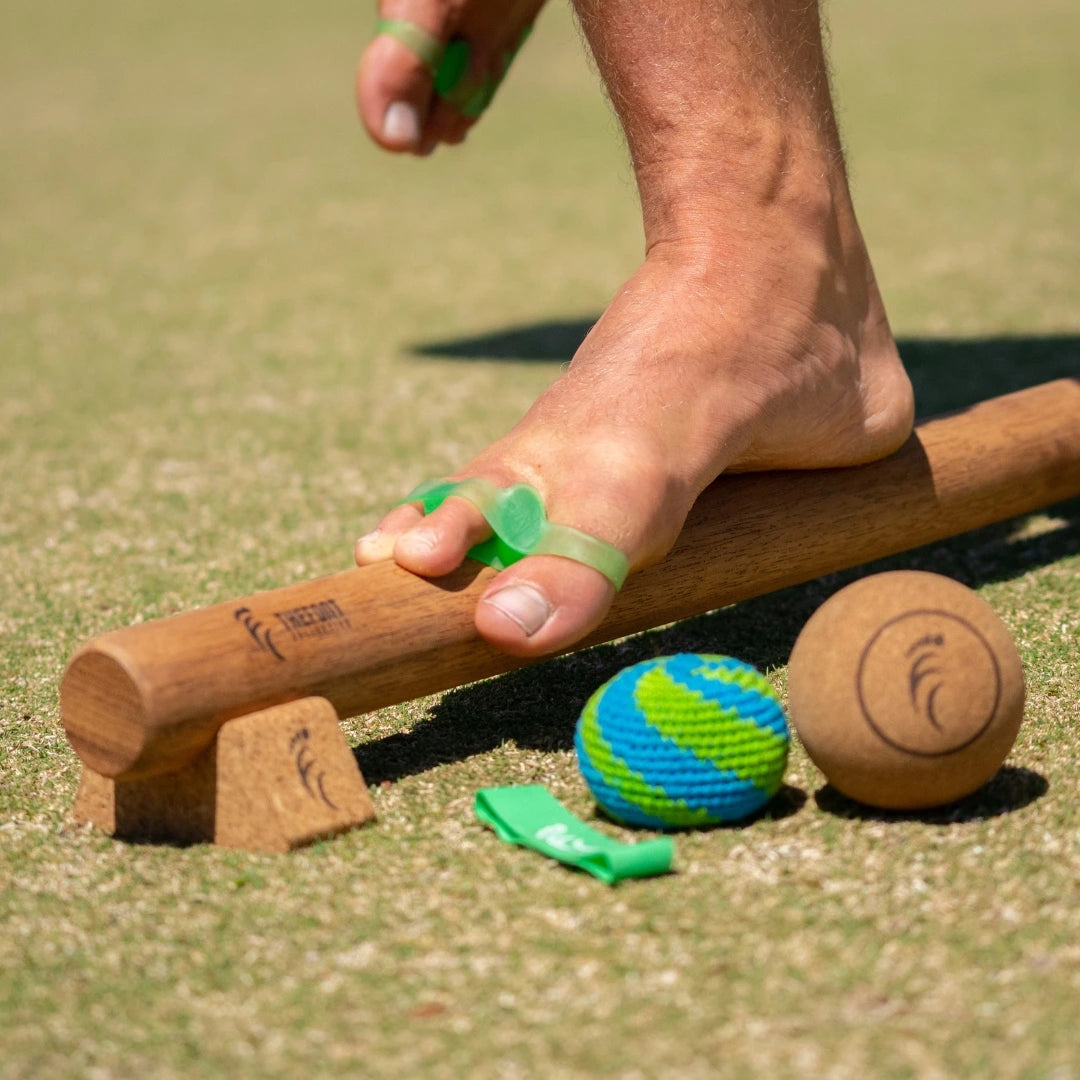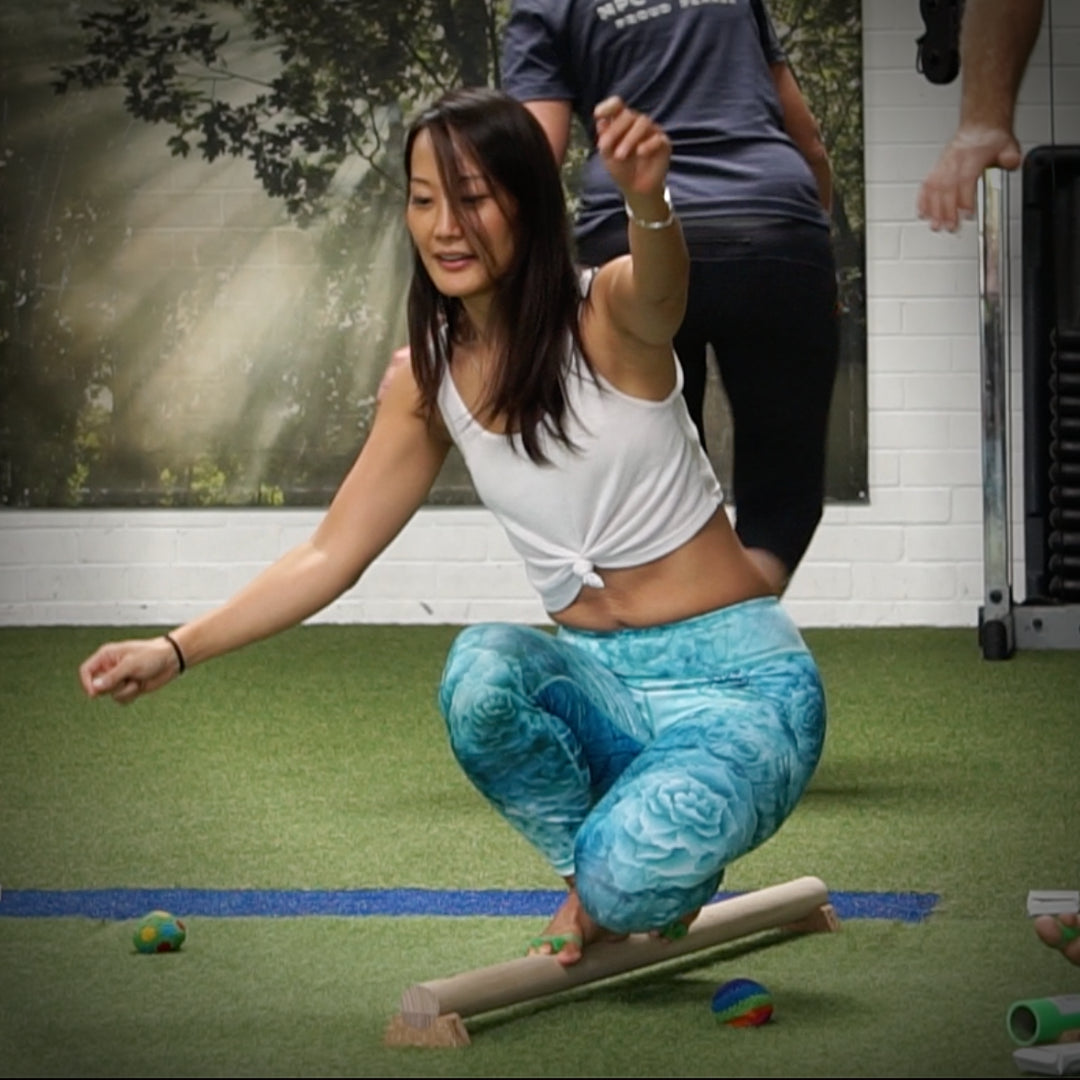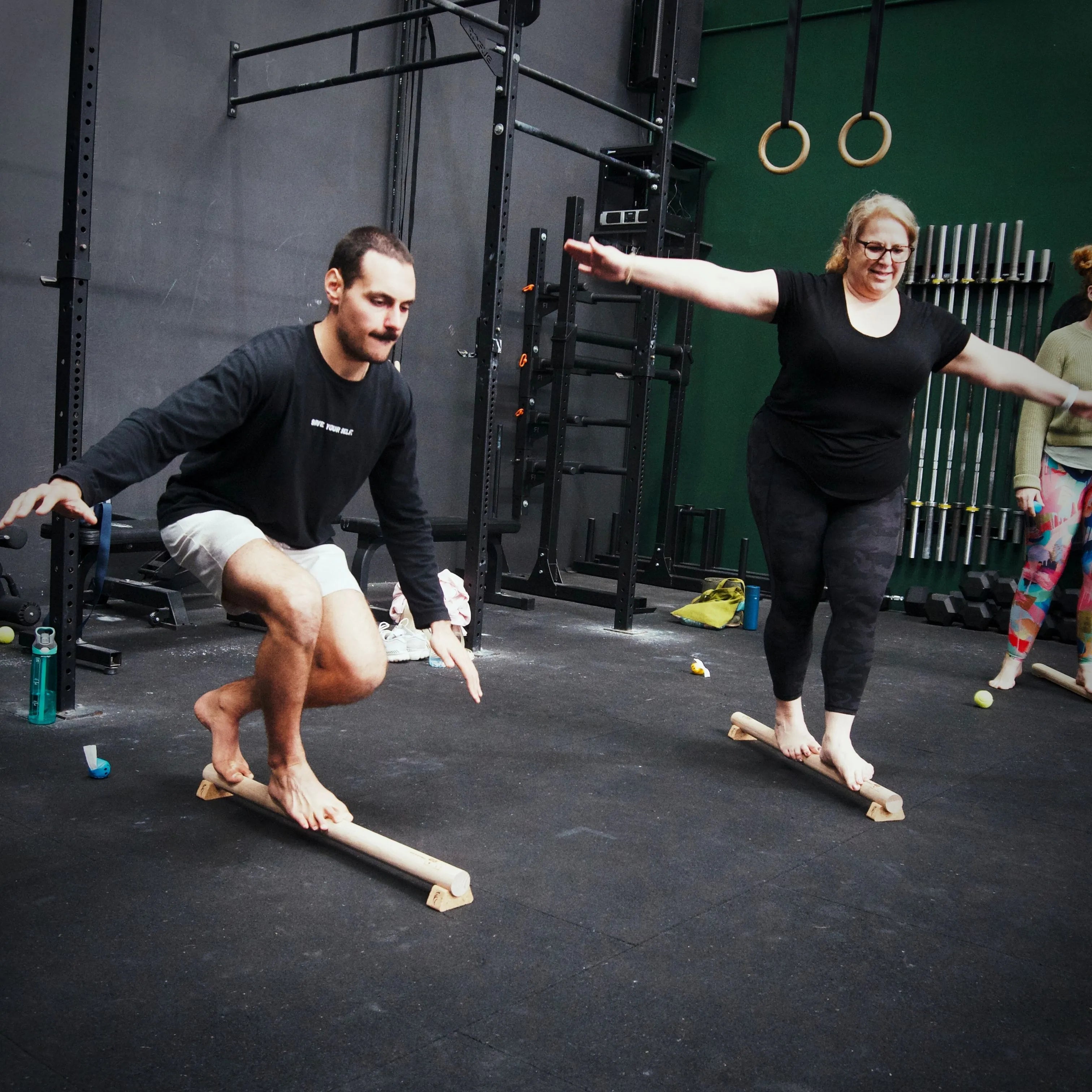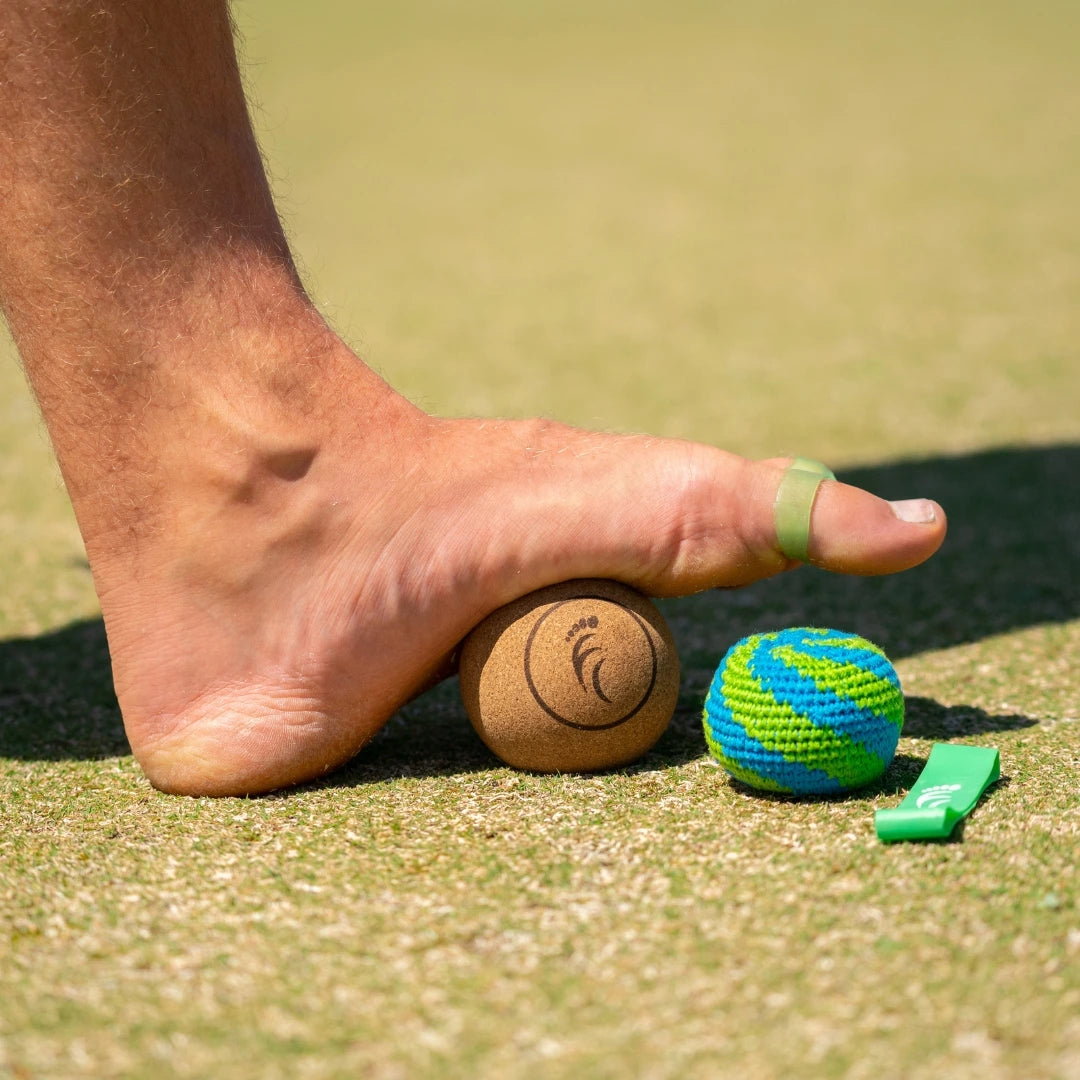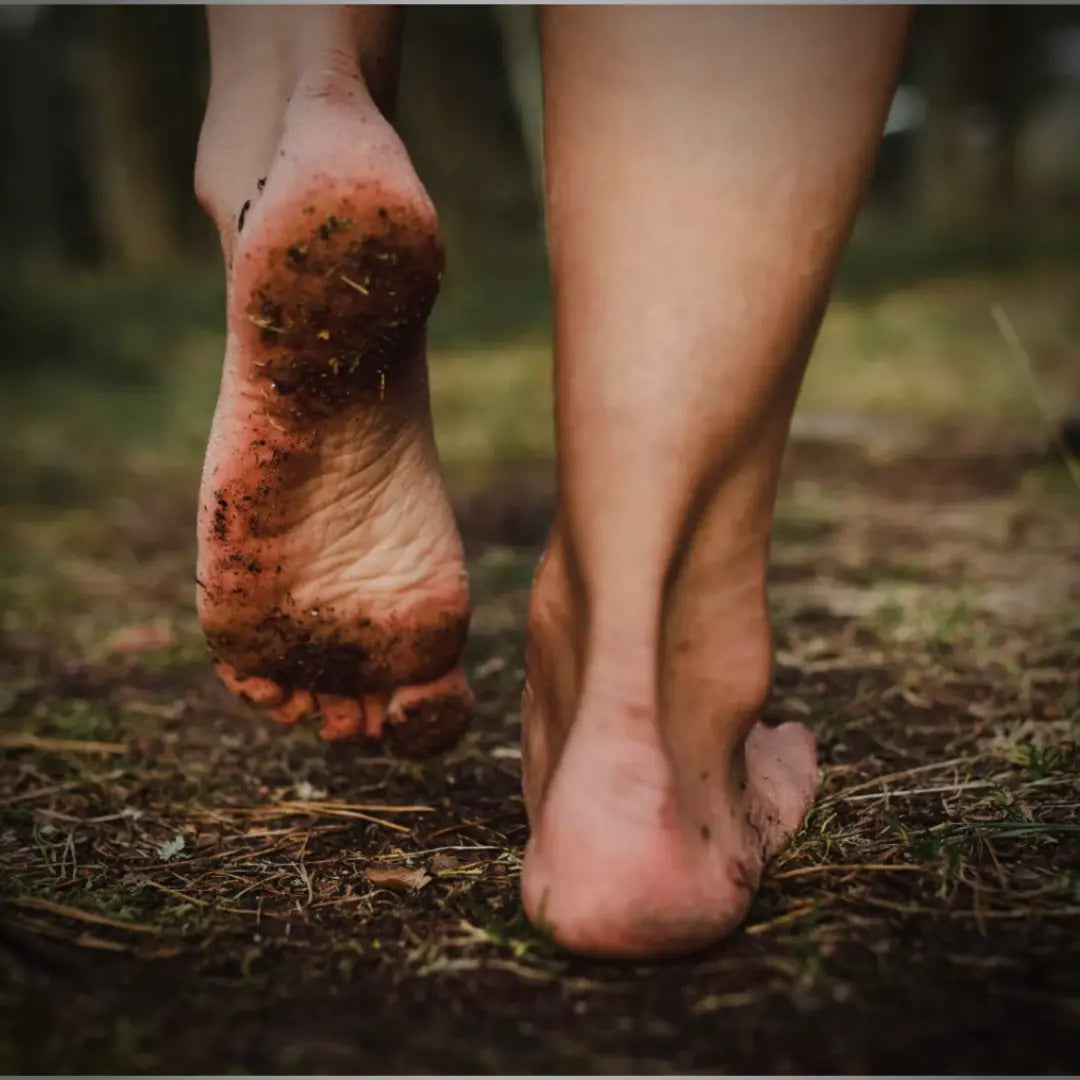
WHY ARE FEET IMPORTANT?
As bipedal animals, our feet are our bodies foundation for movement - we need them for almost everything we do.
Whether you're walking, running, squatting, lifting or climbing, the higher your feet function, the better you'll perform.
Feet are also our primary sensory connection with the ground, constantly relaying information that helps us respond intelligently to our environment.
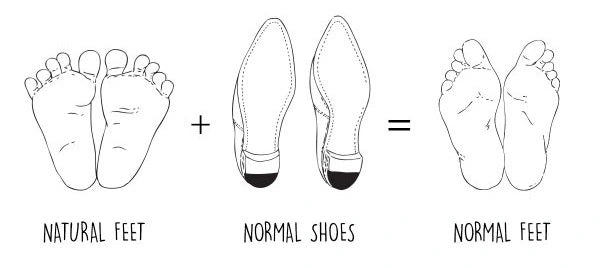
You'll find 'normal' feet on any typical citizen of a first-world, Westernised nation, who's grown up almost constantly wearing shoes and sitting in chairs, and has never needed to survive in a natural environment.
They're weak, stiff and often painful with cramped toes, flat arches and conditions like bunions, in-grown toe nails, Athlete's Foot, plantar fasciitis, blisters, hammer toe and heel spurs just to name a few.
You would see 'natural' feet on a tribesman who's spent their life surviving outdoors without shoes.
They're incredibly resilient, strong and flexible, with a tough outer layer of skin that protects and relays information from the ground.
They've maintained their natural arch and their toes are splayed, allowing optimal balance and shock absorption.
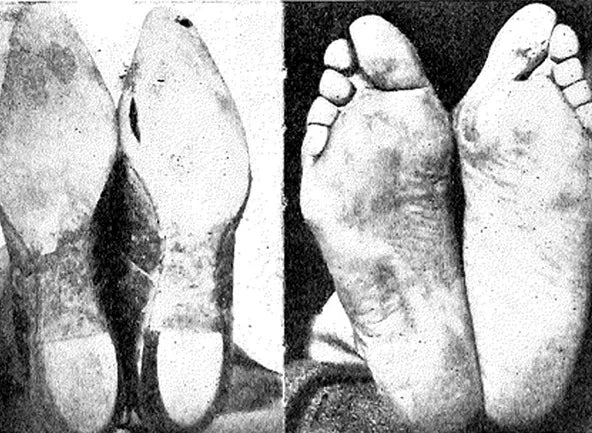
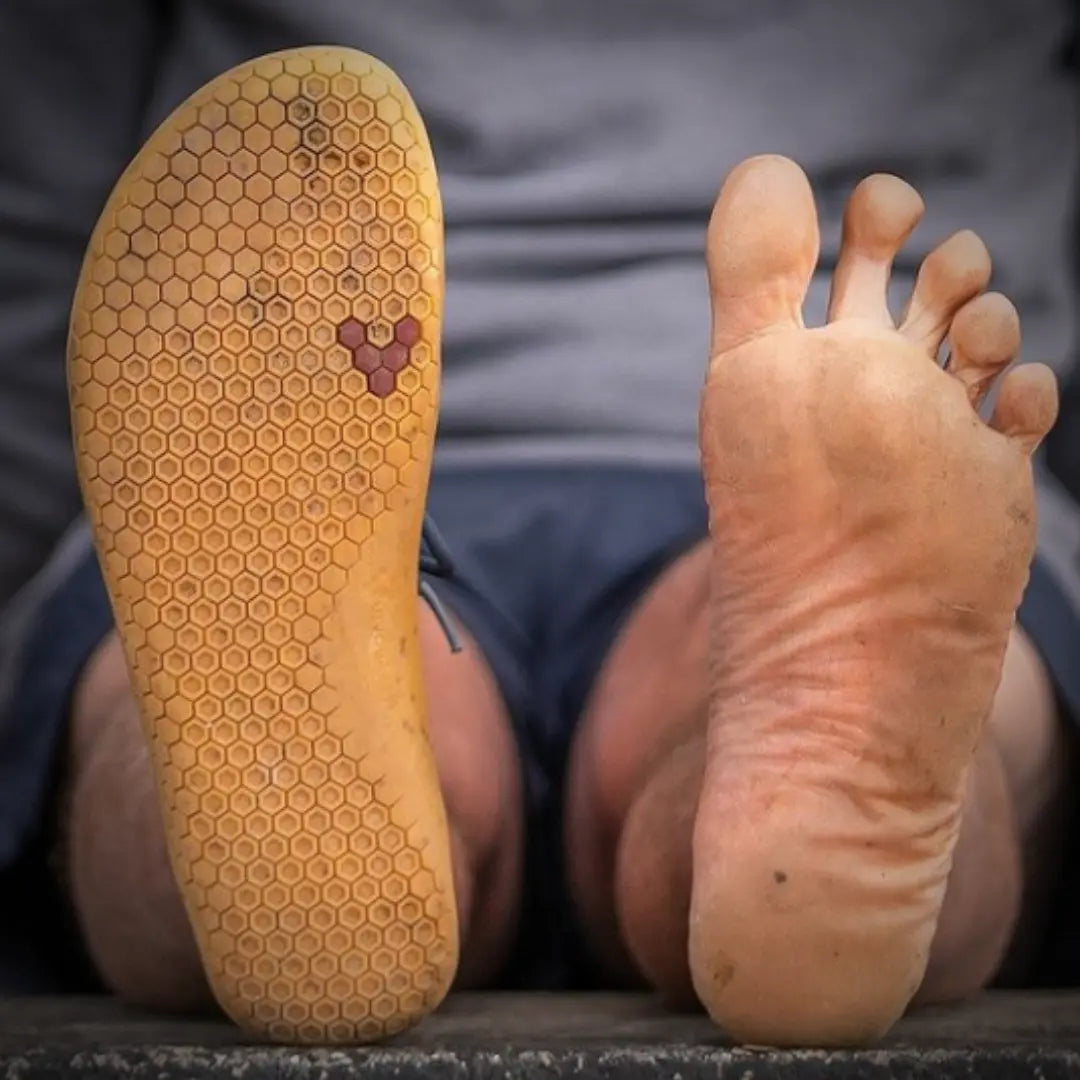
THE TRUTH ABOUT MODERN SHOES
It's now not only commonplace to wear shoes at all times, it's seen as strange, dirty or somehow unhealthy not to.
Humans have invented shoes for all occasions - running, work, gym, dress, dance, sport.
The problem is, most are designed with fashion in mind, rather than function.
They all share similar properties - a narrow toe box, positive heel, rigid body, toe spring and some degree of cushioning.
While they may look good, habitual use of these shoes will inevitably alter the structure and function of the feet inside them.
The narrow toe box will cramp the toes, the positive heel will reduce calf and ankle mobility, the rigid body and toe spring will stiffen the mid-foot and toe joints and cushioning will drastically reduce the sensory and mechanical input from the environment our feet need in order to thrive.
'Natural' or 'Barefoot' shoes are shoes that let the foot function as it usually would while barefoot. They should have a wide toe box, neutral drop (no heel), minimal cushioning and be flexible (can fold/twist/bend).
These properties reduce the negative effects and maximise the benefits of shoe-wearing.
Click the link below to check out our trusted natural footwear brands and get special discounts when you're ready to take the next step.
When transitioning to natural footwear and a more barefoot lifestyle it's crucial to keep in mind that your feet may need time to adapt, especially if you've lived most of your life in 'normal' shoes and have any pre-existing conditions.
Listen to your body, take it slow and you'll feel the benefits.
To help you transition, we created our free 'Guide To Foot Freedom' with actionable steps you can starting taking today.
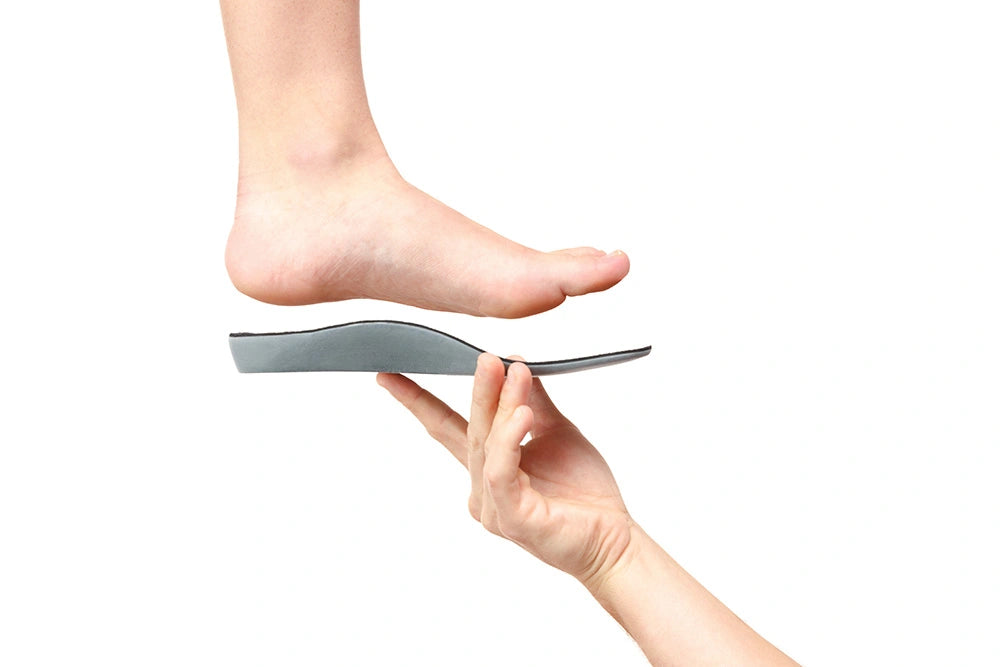
WHAT ABOUT ORTHOTICS?
Orthotics are shoe inserts or 'footbeds', generic or custom-made, aimed at altering biomechanics and reducing impact forces through the feet during activities such as walking and running.
They can be helpful in some cases but should be seen (like a crutch, brace or sling) as a tool that can help immobilise a body part in the short-term to encourage healing or desensitisation, with the ultimate goal being active rehabilitation, restoration of strength and mobility and the eventual elimination of the orthotic.
Sadly, these days orthotics are widely over-prescribed as a life-long necessity for people suffering the negative effects of the modern environment and 'normal shoes'.
When used like this, they essentially become a palliative approach to the problem, managing pain and symptoms without addressing the root issue.
The constant support and immobility enforced upon the feet can also weaken muscles and stiffen joints, only making the problem worse.
There are a small percentage of cases with specific genetic, degenerative or traumatic conditions that may require long-term use, but should ideally still be used in conjunction with active therapy and rehabilitation where possible.
Want a structured foot health program with expert support along the way? Check out our TFC Explorer program below for a guided 42 day journey to unlock the power of your feet, balance and play.
